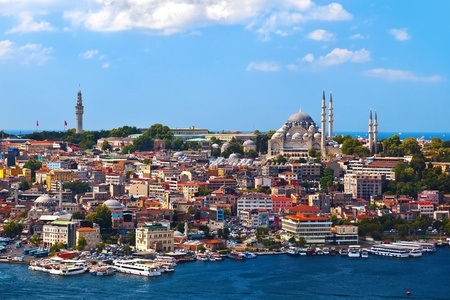
What is the currency in India?
The currency in India is the Indian rupee, one of the world’s oldest forms of money with a history going back almost 500 years.
In this guide, we share all the details you need about the currency in India, from how to convert pounds to Indian rupees, whether cash is more useful than a bank card, and how best to pay for your travels in the beautiful and vibrant Indian subcontinent.
Currency in India
Established in 1540, the Indian rupee is the official currency in India.
Symbolised by a ₹ sign, with the ISO code INR, the rupee is one of the oldest continuously used currencies in the world, reflecting the rich history and heritage of India.
The history of the Indian rupee
The Indian rupee has a past that stretches back five centuries. It was first introduced during the reign of Sher Shah Suri in the 16th century, while its modern form has roots in the British Raj era.
Over the years, the rupee has witnessed several transformations, reflecting the economic and political changes that have shaped India. It began its journey as silver coins, with the first banknotes introduced in 19th century British colonial times.
When India gained independence from British rule in 1947, the Reserve Bank took over the regulation of the currency. The rupee was decimalised in 1957.
Indian rupee denominations
The Indian rupee comes in various denominations of notes and coins. One rupee makes 100 paise.
Indian rupee notes
Notes are available in the following denominations:
- ₹10
- ₹20
- ₹50
- ₹100
- ₹200
- ₹500
- ₹2,000
Indian rupee coins
Coins come in the following denominations:
- 50 paise
- ₹1
- ₹2
- ₹5
- ₹10
- ₹20
Exchanging the Indian rupee
Can I buy Indian rupees in the UK?
Yes, you can, however, there are some restrictions on how much currency you can bring.
If you are a UK resident (and not a citizen of Bangladesh or Pakistan), you may bring up to ₹25,000 into India, if entering the country through an airport only.
Indian rupees are available for purchase at all Travelex bureaux.
How can I exchange foreign currency in India?
Once you arrive in India, exchanging money is straightforward. You should always buy currency from authorised bureaux de change or banks for the most competitive rates, as well as being able to access helpful advice.
How much cash can I take to India from the UK?
You’re allowed to bring foreign currencies such as British pounds, US dollars, or euros.
There are regulations around the maximum amount of money you can bring into India, which are detailed on the UK government website. Typically, you will need to declare anything over the value of £5,000.
Can I use my debit card in India?
Using your debit card in India is relatively hassle-free. In tourist destinations, many hotels and businesses allow payments on international bank cards.
Visa and Mastercard are widely accepted, making electronic transactions a convenient option. American Express and Diners Club are less frequently recognised.
Note that every card issuer is different, and there are often exchange fees and transaction costs for using your card abroad. Check how much you will be charged before using your card outside the UK.
Many travellers find that they get extra peace of mind with the Travelex Money Card, powered by Mastercard®. It’s a secure way to take money abroad and can be frozen using the Travelex Money App if it’s lost or stolen.
ATM charges in India
ATMs are readily available throughout most of India, making it easy to access cash when you need it. But do be aware of any bank charges associated with ATM withdrawals, as most card issuers impose fees for using ATMs outside the UK.
It's always wise to carry enough cash for emergencies, especially in case the nearest ATM is out of service. This becomes even more important if you're in a remote area where access to ATMs might be limited.
Travel safer with our Travelex Money Card
A great alternative to carrying your debit card is our Travelex Money Card. Unlike your debit card, our Travelex Money Card is not linked to your bank account, minimising your risk of losing all your funds in case of loss or theft. You can make secure contactless payments directly at the point of sale in India with our card and also withdraw Indian rupees from ATMs.
Please note that a 2% fee applies to GBP loads, and a 5.75% fee is incurred when using the card in India where the local currency isn't offered on our Travelex Money Card. This fee also extends to cash withdrawals for Indian rupees and other currencies that are not offered on our Travelex Money Card. While Travelex does not impose charges to ATM withdrawals, it's important to note that fees from other ATM providers may apply.
If you're looking for inspiration on what to see and where to go, our India travel guide is full of great ideas to help you plan your trip. We also have a guide with tips on how to travel India on a budget.



